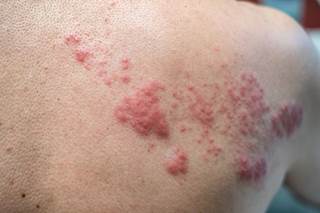
The 2007 and 2008 shingles and varicella vaccination recommendations may have contributed to the declining herpes zoster hospitalization rates in some groups.
The 2007 and 2008 herpes zoster and varicella vaccination recommendations may have affected the declining herpes zoster hospitalization rates in targeted age groups, according to a study published in Vaccine.
The Centers for Disease Control and Prevention officially endorsed the 2005 recommendation from the Advisory Committee on Immunization Practices for the addition of a second booster dose at age 4 to 6 years in the varicella vaccine schedule, and the herpes zoster single-dose vaccine for people aged ³60 years, in 2007 and 2008, respectively. Currently, there are limited published data on the effect of the 2-dose varicella and single-dose herpes zoster vaccine recommendations on herpes zoster incidence in the United States. Therefore, this study examined trends in herpes zoster hospitalization rates and assessed the effect of both policy recommendations, using hospital discharge data.
Discharge data (2001-2015) were extracted to identify primary and secondary herpes zoster diagnoses from the Nationwide Inpatient Sample, which contains annual discharge data for a 20% sample of US hospitals and is the largest publicly available all-payer inpatient care database in the United States, containing roughly 8 million hospitalizations annually. Herpes zoster-associated hospitalization was defined by a first or second discharge diagnosis, indicated with specific International Classification of Diseases, Ninth Revision, Clinical Modification (ICD-9-CM), or ICD-10-CM codes.
Annual total and age-specific herpes zoster hospitalization rates and average length of stay trends were examined. The average annual rates for the pre- and postzoster vaccination policy eras were compared (2001-2005 and 2012-2015, respectively). Researchers noted that the 2006 to 2011 period was treated as a transition period because of a vaccine supply shortage resulting from manufacturing issues. In addition, absolute change in herpes zoster hospitalizations was calculated.
Results suggested that the 2-dose varicella vaccination recommendation may have contributed to declining herpes zoster hospitalization rates among children (£14 years), and the 2008 herpes zoster vaccine may have also contributed to declining hospitalization rates for adults aged ³60 years. From 2001 to 2015, there were 400,651 herpes zoster hospitalizations, which accounted for 0.07% of all US hospitalizations during the study period.
The number of herpes zoster hospitalizations increased in direct proportion with age: 0.07% in those aged 7 to 14 years, 0.06% in those aged 40 to 49 years, 0.07% in those aged 60 to 69 years, 0.12% in those aged 70 to 79 years, 0.16% among those aged 80+ years, and less than 0.05% in all other groups. In 2001, the annual incidence rate of herpes zoster hospitalizations was 8.6 per 100,000 population in the US and decreased to 6.8 per 100,000 population in 2015. Although there were steady increases in the overall rate of herpes zoster hospitalizations from 2001 to 2008, this significantly decreased between 2001 and 2015.
Further, the largest decreases in herpes zoster hospitalization rates between 2001 and 2015 occurred in groups that were directly targeted by the 2007/2008 recommendations. The age-adjusted average annual change in hospital rates from pre- vs post-herpes zoster vaccine period was 1.9 fewer hospitalizations per 100,000 population (P <.001).
Overall, the study authors concluded, “The recent licensure of a new 2-dose recombinant sub-unit herpes zoster vaccine and expansion of the recommended age of herpes zoster vaccination to ³50 years should have significant [effect] in the [US] on vaccination coverage and herpes zoster hospitalizations over time, and continued surveillance will be necessary to measure this [effect].”
Reference
Pham MA, Bednarczyk RA, Becker ER, Orenstein WA, Omer SB. Trends in U.S. community hospitalizations due to herpes zoster: 2001-2015. Vaccine. 2019;37:882-888.